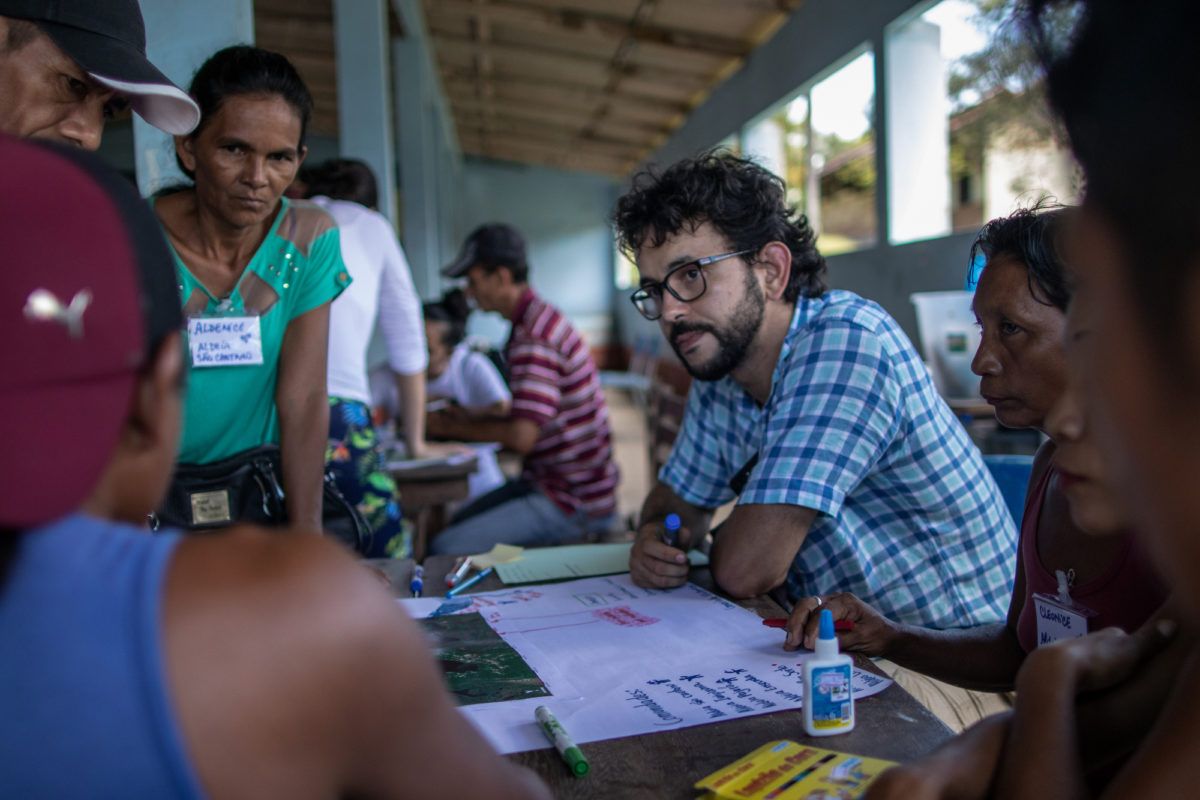TAPAJÓS NATIONAL FOREST, PARÁ — “The fire is becoming something dangerous,” says Pedro Pantoja, 69, known by the nickname Pedrinho. “If there is another way for people to plant their crops without fires, it would be much better,” explains Pantoja, one of the oldest residents of the community of Jamaraquá, in the Tapajós National Forest, western Pará, where each farmer has his own small plot of land to plant cassava, and his own date to set a controlled fire in the area. “In October or November, closer to the rainy season, we would get ready for the burning.”
The Tapajós National Forest is one of the most visited conservation areas in the northern region and one of the most researched in the Amazon. The river after which the forest takes its name is the key player of one of the largest and most beautiful river basins in the entire Amazon and is known for its white sand beaches — its waters also reach the world-famous Alter do Chão district, where lodges are equipped with air conditioning and restaurants with typical cuisine offer patrons menus in English. In the National Forest, where more than 4,000 residents are spread out over 23 communities and 3 indigenous villages, tourism is more rustic, and the Tapajós River acts as the center of community life.
FLORESTA NACIONAL DO TAPAJÓS, PARÁ – “O fogo está se tornando uma coisa perigosa”, conta Pedro Pantoja, 69 anos, conhecido como seu Pedrinho. “Se tiver outro jeito para o pessoal fazer seu plantio sem queimadas, vai ser muito melhor”, explica o ribeirinho, um dos mais antigos moradores da comunidade de Jamaraquá, na Floresta Nacional do Tapajós, oeste do Pará, onde cada produtor tem o seu pequeno roçado para plantar mandioca e uma data própria para queimar a área. “Em outubro ou novembro, mais perto da época de chuvas, o pessoal se organiza para a queima”.
A Flona do Tapajós é uma das unidades de conservação mais visitadas da Região Norte e uma das mais pesquisadas da Amazônia. O rio que empresta o nome à Flona é o protagonista de uma das maiores e mais belas bacias fluviais de toda a Amazônia e é conhecido pelas praias de areia branca – suas águas também banham o mundialmente famoso distrito de Alter do Chão, no qual pousadas com ar-condicionado e restaurantes de comida típica oferecem cardápios em inglês. Na Flona, onde vivem mais de quatro mil pessoas distribuídas por 23 comunidades e três aldeias indígenas, o turismo é mais rústico, e o Rio Tapajós é o centro da vida comunitária.
View the full story in Portuguese at Mongabay.
